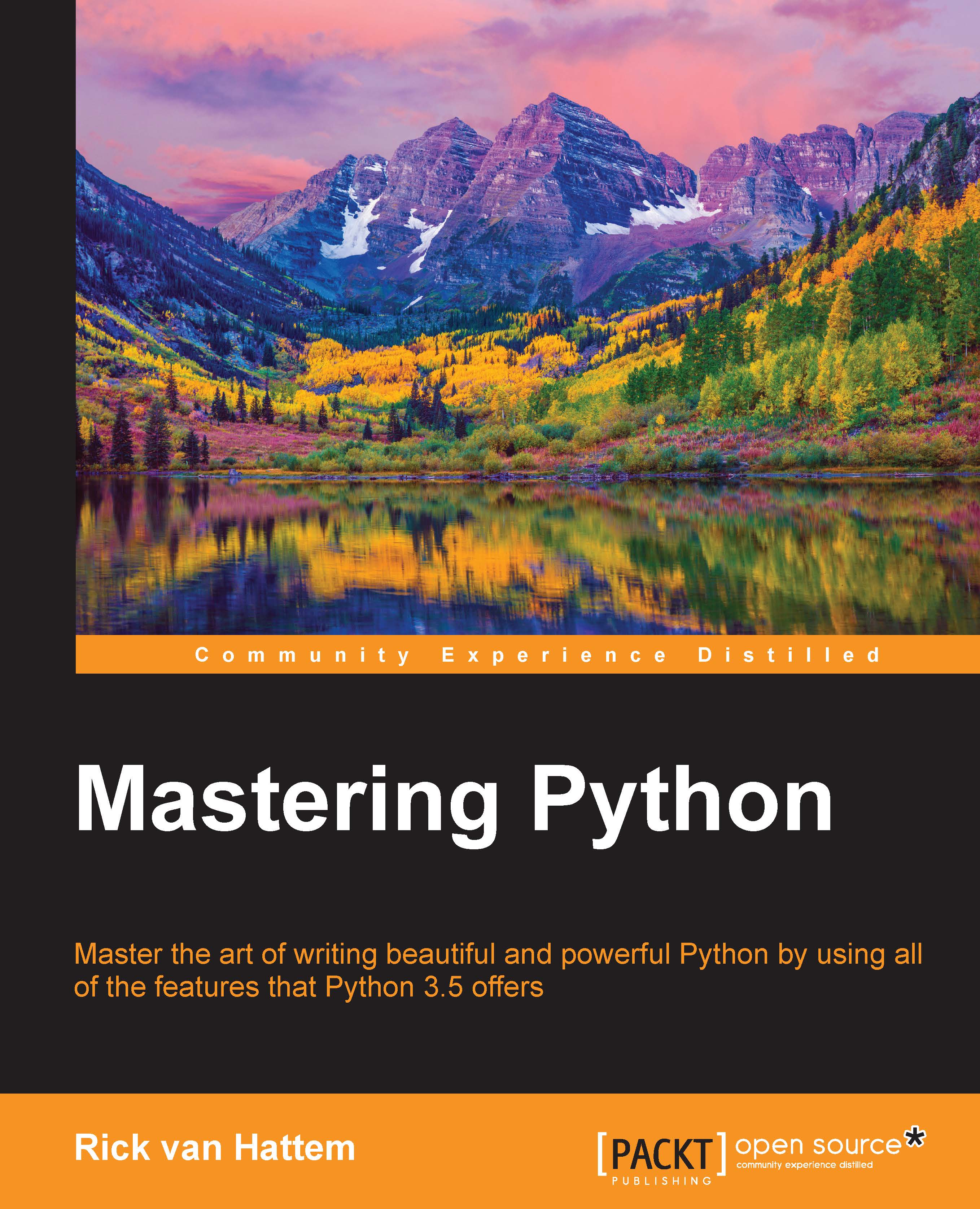-
Book Overview & Buying

-
Table Of Contents

Mastering Python
By :

Mastering Python
By:
Overview of this book
 Free Chapter
Free Chapter
 Sign In
Start Free Trial
Sign In
Start Free Trial

 Free Chapter
Free Chapter
The asyncio library was created to make asynchronous processing much easier and results more predictable. It was introduced with the purpose of replacing the asyncore module, which has been available for a very long time (since Python 1.5 in fact). The asyncore module was never very usable, which prompted the creation of the gevent and eventlet third-party libraries. Both gevent and eventlet make asynchronous programming much easier than asyncore ever did, but I feel that both have been made largely obsolete with the introduction of asyncio. Even though I have to admit that asyncio still has quite a few rough edges, it is in very active development, which makes me think that all the rough edges will soon be fixed by either the core Python library or third-party wrappers.
The asyncio library was officially introduced for Python 3.4, but a back port for Python 3.3 is available through the Python Package Index. With that in mind, while some portions of this chapter...

